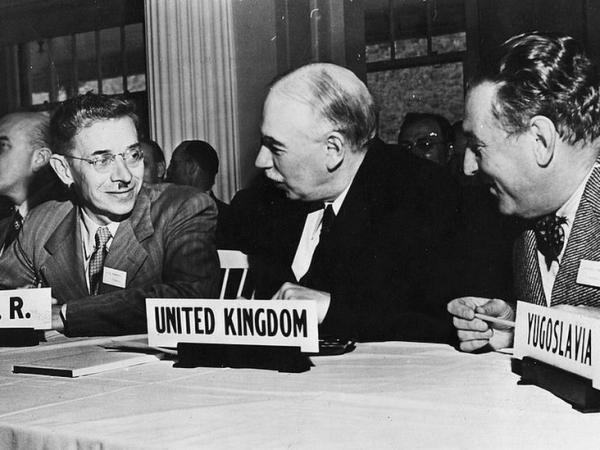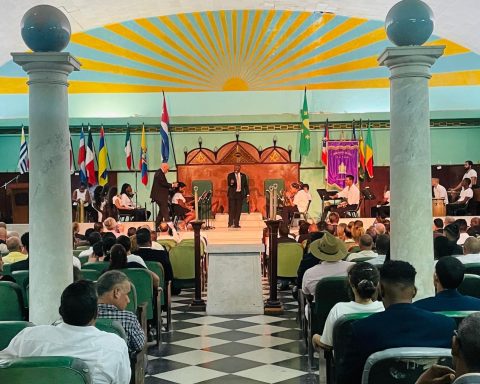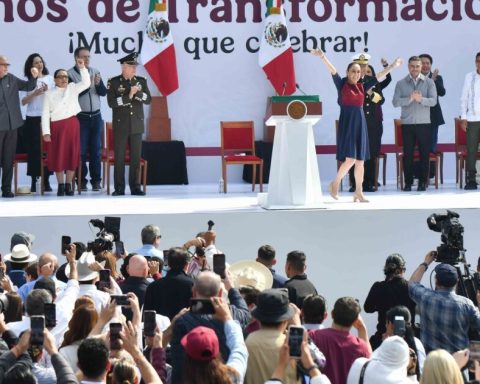The history of money is exciting. For thousands of years it has not only served as a means of payment and a deposit of wealth.
It has also been a unit of account, that is, a system that allows us to set prices and register debts.
The origin of money is as controversial as its definition. Archaeologists, historians, philosophers and economists have their own theories about the mysterious leap that humans took when we developed the first commercial systems born after barter.
We can find the origin of money in the transactions that thousands of years ago were made with cereals, grams of silver, clay objects, sea shells, or cocoa beans, up to the metal coins officially minted by kings in ancient times. Iraq.
Much later, the first paper banknotes emerged in China, created when coins were so heavy that carrying them was a nightmare.
And recently, barely 70 years ago, in secret political negotiations until late at night in a hotel lost in the middle of some mountains, a green bill called the dollar came to be the most powerful currency in the world.
At BBC Mundo we tell you the story of the birth and evolution of money, an essential key to understanding how the commercial transactions that have marked the development of humanity have changed over the years.
If we think of money as something material that allows us to carry out transactions, some experts argue that its origin can be found in grams of silver or barley, a cereal with which the Sumerians in Mesopotamia (currently Iraq) traded about 5,000 years ago. years.
Those products that, on the one hand, had a value in themselves, also served as a unit of measurement and were used to quantify the value of other things through their weight, such as the value of a slave, of work , interest on a debt and even promises to pay.
Some workers were paid in fixed amounts from things like beer or furniture, says Jon Taylor, curator of the cuneiform and cylinder seal collections in the British Museum’s Middle East Department.
It was also common for raw materials to have a value when compared to each other. Wool and dates, for example, could have an equivalent value in grams of silver.
Even “merchants who did long-distance operations offered each other a kind of credit, through which they could withdraw resources in one place and return them in another, or transfer the right to resources to another person,” he adds. “Whether this constitutes currency or money is a debated issue.”
It all depends on how we define the concepts. The field director of the Ur Project of the Museum of Archeology and Anthropology of the University of Pennsylvania, United States, William B. Hafford, argues that money is “an attempt to quantify value”, while currency “is a physical form of money, a standardized article”.
From this point of view, barley and silver were forms of currency and probably the oldest type of physical money known to date.
Now, says the expert, the root of money is in the credit-debt transactions that existed in ancient Mesopotamia.
Hafford has worked for years on excavations in the area where Ur, one of the most important Sumerian city-states in Mesopotamia, was located.
These transactions were based on the fact that a person could obtain something from another, promising something in exchange in the future. Thus arises the concept of debt.
So, this form of exchange that first arose in small communities, would later develop in larger communities, until, over time, the debt ends up being quantified when writing is invented, says the expert.
“We have a lot of loan and debt tablets in ancient Mesopotamia. They usually carry interest as well,” he adds.
The Code of Hammurabi, for example, establishes that the interest rate on silver is 20% and that of grain is 33%.
Silver was the most common way the value of most things was quantified for much of Mesopotamia’s history.
“We often find silver treasures buried under the floors to protect them. These contain bits of silver cut from vases, from old beads, cast into ingots or made into spiral rings,” Hafford explains.
Spiral rings were the easiest way to transport the metal, sometimes even tied to the hair. A part of the spiral could be broken to weigh and pay for things.
The typical exchange rate was 1 shekel of silver (8.4 grams) for 1 GUR of grain (about 300 liters). The grain could be ground into flour, making it a highly prized commodity.
In some clay tablets of ancient Mesopotamia, the record of debts was left. According to historian Niall Ferguson, some of these objects (smaller than the size of a hand) were themselves a promise of payment to the bearer of the tablet or a kind of purchase order.
In some, it was written that, for example, a debt of four measures of barley had to be paid to the bearer of the clay tablet, which in practice would transform that object into a type of money.
As Eckart Frahm, a Yale University professor of Near Eastern Languages and Civilizations, argues, Mesopotamian traders occasionally used more “virtual” forms of money than traditional metals.
“Long-distance trading enterprises of 20th and 19th century BCE Assyrian traders, for example, documented by some 24,000 clay tablets from the city of Kanesh in central Turkey, include modern items such as bearer checks “.
“Payment was made to the person holding the check, which came in the form of a Kanesh tablet,” he says.
But not everyone shares that vision of the use of Mesopotamian tablets as a form of money.
Nicholas Postgate, an archaeologist at the University of Cambridge in the UK and former director of the School of British Archeology in Iraq, argues that in the Mesopotamian context the clay tablets themselves included records of transactions and were not used as coins.
“The closest thing we have to money, but better to say currency, is silver along with barley.”
Researchers such as Jacob Dahl, Professor of Assyriology at the Faculty of Asian and Middle Eastern Studies at the University of Oxford, United Kingdom, suggest the same.
“Cuneiform tablets did not function as money. They had loan documents that could obviously be worth the money borrowed and the interest, and in the later periods of ancient Babylonia and ancient Assyria there were promissory notes,” he argues.
At that time, he adds, silver functioned as a medium of exchange much like what you might think of as money, “but since it was never backed by a central bank or a state, you still can’t call it money.”
The first coins officially minted by a government would have appeared around the year 640 BC in Anatolia, currently Turkey, with the seal of King Aliates of Lydia.
This coin, the Lydian stater, commonly made of an alloy of gold and silver known as electrum, was older than coins minted in China, India, or in such civilizations as the Egyptians, Persians, Greeks, or Romans.
The minting of coins was successful because of their durability, the ease of transporting them and because they had their own value.
By becoming so efficient and valuable, they became an instrument of political control. They facilitated the collection of taxes to maintain the elites, allowed the financing of armies and expanded trade beyond borders.
Along with coins, other forms of money continued to be used. In fact, the word salary comes from the Latin salarium, whose origin is in salt. At the time of the Roman Empire, soldiers and public officials were paid with salt, a very valuable product that was used, among other things, to preserve food.
Some of the ancient coins are as rare as they are beautiful, and thanks to the fact that they have been preserved over time, they provide valuable information to scholars of civilizations prior to our era. One of them is the silver Tetradrachma minted in Athens, around 450 BC. C., with an owl, emblem of the goddess Athena.
And when did the tickets appear? For a long time, the basic monetary unit in China was copper or bronze coins with a square hole in the center, which allowed them to be hung on a thread to form a chain.
But as travel and commerce expanded, so did the demand for coins to carry out transactions. There was a time when copper became scarce, but even more important, the rulers realized that it was key to maintain control of the currency.
Not wanting their valuable coins to leak into foreign lands, they made a rule: only coins made of iron could be used.
Well, the iron coins were so heavy that neither the mules nor the carts with oxen resisted such a load when large transactions had to be made.
Imagine that, for a handful of silver, they gave you a giant sack of iron coins, as big as a person’s body.
It would have been the merchants who first began to experiment with paper “financial instruments” to avoid moving large amounts of coins.
It was during the Song dynasty, around 1,000 CE, in Sichuan province, that the empire officially issued the world’s first paper money, the jiaozi, made from the bark of the mulberry tree.
Since then, merchants stopped using their own IOUs and rulers took control of the system by making the jiaozi an official note.
As official as the dollar when it became the currency of the United States by decree in 1792.
As World War II drew to a close, the Allied governments realized they had a problem: their economies were devastated and they were wondering what currency international trade would be in when rebuilding began.
It was then that representatives of 44 countries met for 22 days in July 1944 at the Mount Washington Hotel in the town of Bretton Woods, United States, to negotiate the future of postwar finance and trade.
The European countries came to the meeting with deep economic deprivations and the United States with the largest gold reserves in the world.
There were 22 days of meetings with intense political fights that took place in the hotel bar “The Moon Room” until late at night between whiskeys and cigars, according to Ed Conway, in his book “The Summit”.
Two men faced off in an intellectual duel almost to the death: the British John Maynard Keynes (with his utopian idea of creating a common currency for the whole world called “bancor”) and the American, Harry Dexter White, of the Treasury Department, who ended up winning the battle.
At the end of Bretton Woods, it was established that the US dollar would be the currency for international transactions. And the two institutions that were created at that meeting, the International Monetary Fund and the World Bank, would make loans in dollars to countries with economic problems after the end of the war.
Who would have imagined at that time that the negotiations carried out in a hotel half lost in the mountains would give rise to the architecture of finance that persists to this day.
Remember that you can receive notifications from BBC Mundo. Download the new version of our app and activate them so you don’t miss out on our best content.


















